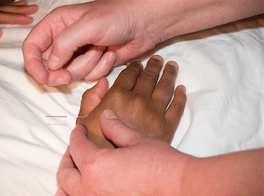
Spring and summer are wonderful seasons to many. In spring, nature stirs after the sleep of winter, and people awaken to the joy of being alive. Summer brings this process to fruition, for those who don’t mind the heat. But to those who suffer from hay fever, spring and summer can be the worst seasons of the year, especially here in Sacramento, which is known as the allergy capital of California.
Hay fever is recognized by the annoying symptoms of watery nasal discharge, sneezing, and itchy eyes and nose. Hay fever is actually a popular name for allergic rhinitis, a disease provoked by airborne pollens and other substances. Everybody recognizes the symptoms of allergic rhinitis because we all know someone who suffers from it. It is estimated that 15 to 20% of Americans have recurrent or chronic nasal problems, and these are often caused by allergies, though there are other etiologies as well.
Allergic rhinitis is usually a seasonal phenomenon. People who are allergic to tree pollens will develop symptoms in mid-March or early April. If they are allergic to grasses, the symptoms will appear in mid-May or June. Ragweed and other summer weeds provoke symptoms in late August. And then there are those who have multiple allergies and are miserable for several months every year. If a person suffers from allergic rhinitis year-round, the problem is being caused by dust, molds, animal dander, or some kind of chemical.
In Western medicine, allergic rhinitis is caused by a release of histamine from mast cells in the nasal mucosa. This release is mediated by IgE and other substances. The reaction occurs in response to inhalation of an antigen, the substance one is allergic to. It is generally treated with antihistamines, decongestants, intranasal topical corticosteroids, or cromolyn sodium. With the exception of cromolyn sodium, none of these drugs are without side-effects. Most antihistamines cause unwanted drowsiness, and those that don’t are very expensive. Nasal decongestants can actually result in a worsening of symptoms due to reflex vasodilation, and they are, in a sense, addicting because they must be used more and more frequently to achieve the original effect. Use of topical corticosteroids is relatively safe, but excessive dosages may lead to adrenal suppression. Colonization of the nose by candida and nose bleeding have also been reported, though not frequently. Another form of therapy involves reducing sensitivity to allergens by injecting incremental doses of them over a period of time in order to build up antibodies, but the response to this mode of therapy is not dramatic, and medication must usually be taken as well.
Acupuncture offers a natural and effective treatment of allergic rhinitis, one which is free of unwanted side-effects. Oriental medicine sees the body, and indeed the whole universe, as an energy system, a concept not at all foreign to modern physics. Material objects, including the biochemicals responsible for physiological processes, are manifestations of energy. This energy is called qi in the Chinese language. According to the Oriental diagnostic system, chronic allergic rhinitis often results from an underlying deficiency of the qi, or life-energy, of the Lung and can be treated in part by stimulating points on the lung meridian, most of which are found near the wrist. The symptoms of hay fever involve the nose, but in Chinese medicine, the nose is regarded as an extension of the lung, which in fact it is. When the lung functions normally, respiration is normal, the nose is unobstructed, and the sense of smell is acute. Points on other meridians are used as well. The most commonly used point, Large Intestine 4 (He Gu), is found on the web between the thumb and index finger. Other points are located over the sinuses and have the effect of reducing nasal secretion. When the energy of the lung is strengthened, the sensitivity to airborne allergens decreases, and the patient can experience substantial relief. Since acupuncture is a holistic system of medicine, the whole person is treated, both mind and body. Patients with a lung qi deficiency often have systemic symptoms that include general lassitude and fatigue, lack of spirit and apathy, spontaneous sweating, and a propensity for catching cold. Often, other organ systems and meridians are involved as well. By supplementing the qi where it is deficient, draining it where it is excess, and balancing its flow and distribution, overall improvements in health can result.
Laboratory studies corroborate the traditional Chinese account of how allergic responses can be reduced or eliminated. They have shown that after acupuncture, the IgE level decreases, resulting in a decrease in histamine production. Acupuncture also seems to desensitize the nerves that would normally react adversely to the IgE-antigen complex.
Herbal medicine is a very useful adjunct to acupuncture treatment because there are a number of Chinese herbs which reduce the inflammatory response as well as sinus congestion. In Oriental medicine, herbs are rarely given singly, but are combined with other herbs in formulas that have a balancing effect on the body. Each individual is different, and formulas are adjusted accordingly.